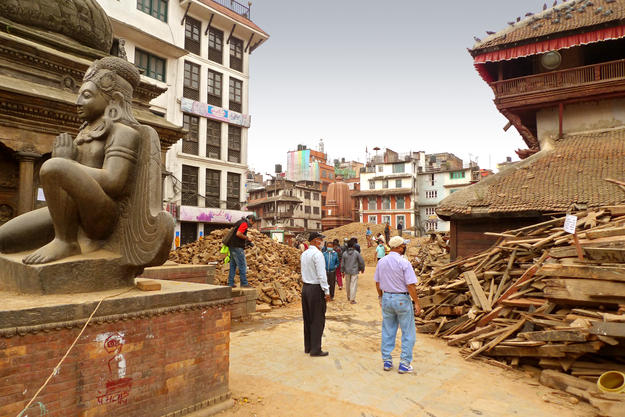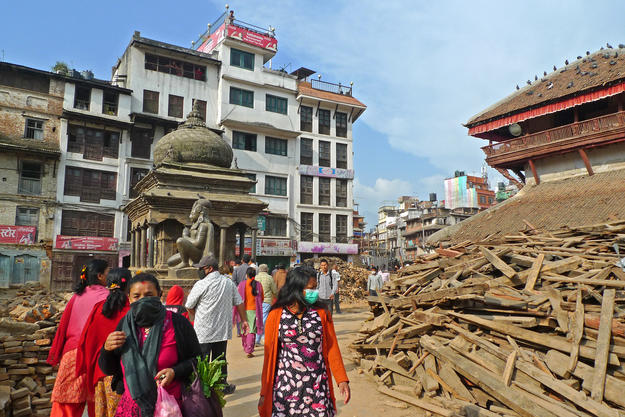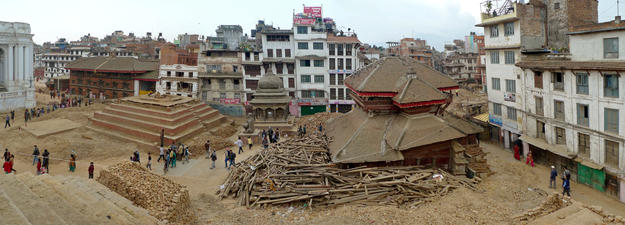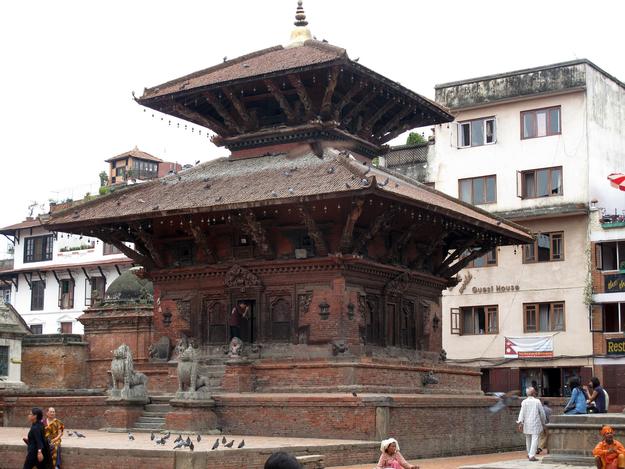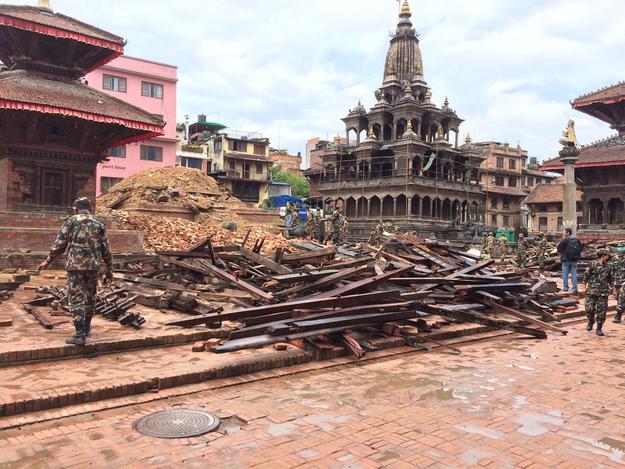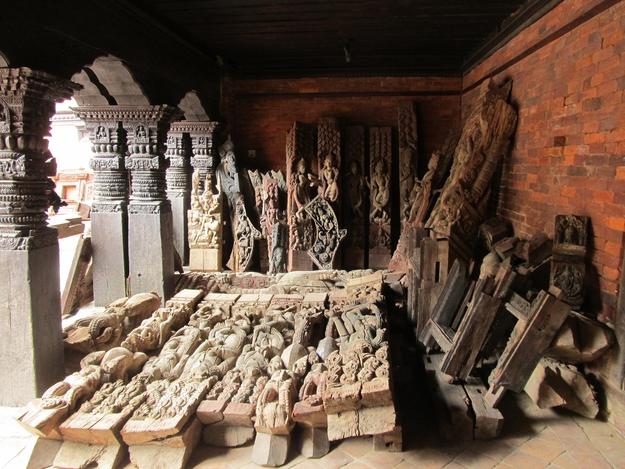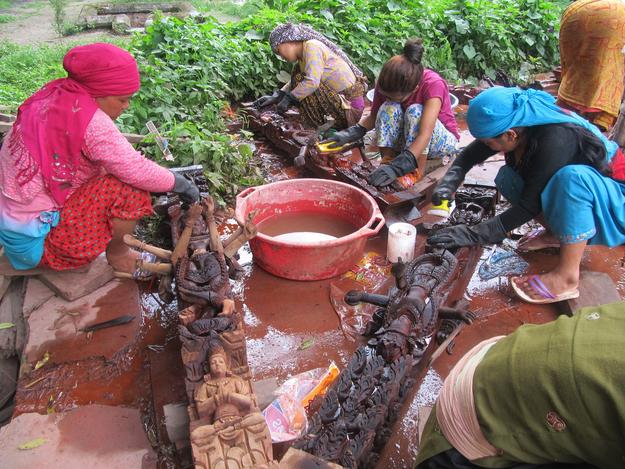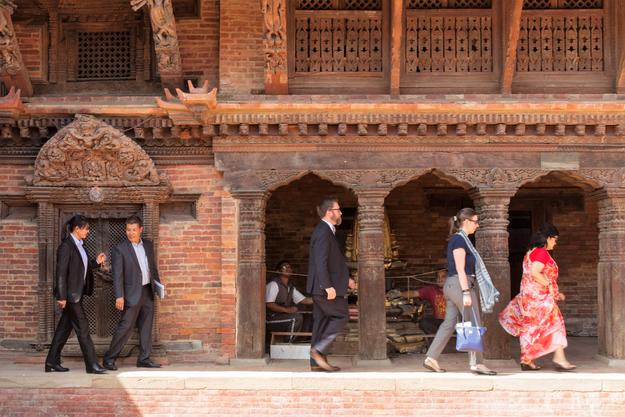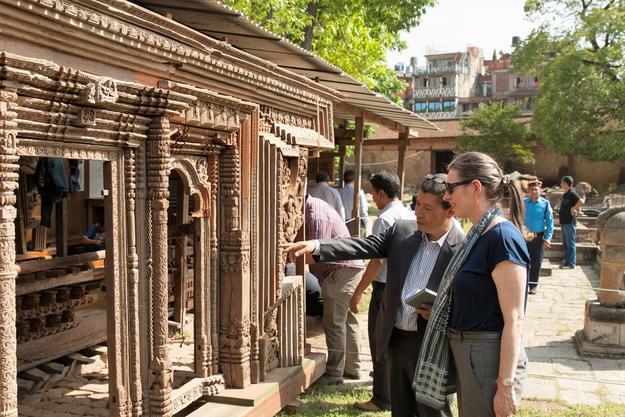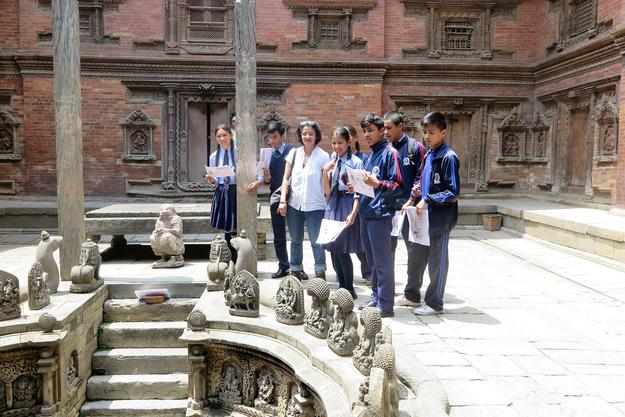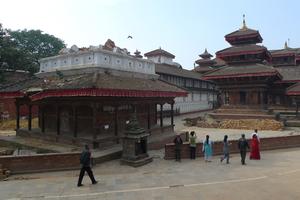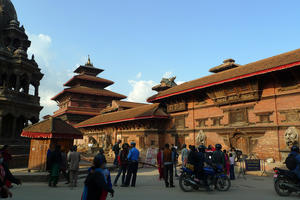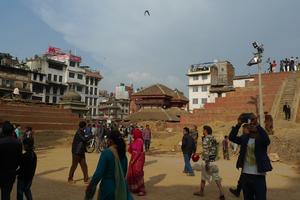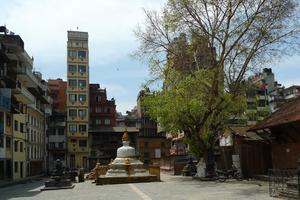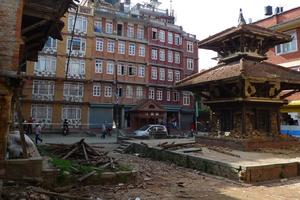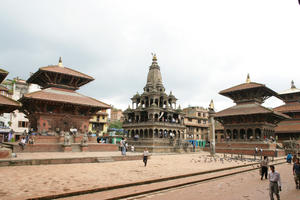Cultural Heritage Sites of Nepal
On April 25, 2015, a major earthquake struck Nepal, causing thousands of human casualties and widespread destruction of buildings and infrastructure. The earthquake was followed by hundreds of aftershocks in the subsequent weeks, and had a direct impact on a third of the country’s population, stimulating an international humanitarian response.
The earthquake’s impact on heritage places was extensive throughout the Kathmandu Valley, which is home to hundreds of sacred Buddhist and Hindu sites. The fusion between the two religions is a unique part of Nepalese history and culture, and its outstanding significance has been recognized by the inscription of seven groups of monuments in the Kathmandu Valley on the UNESCO World Heritage List. In the Durbar Squares of Hanuman Dhoka in Kathmandu, Patan, and Bhaktapur, many buildings collapsed completely, while others sustained major structural damage. Other religious sites, such as Swayambhunath temple, one of Buddhism’s most important shrines, were also damaged. Throughout the country, around 750 monuments were affected by the earthquake, according to Nepal’s Department of Archaeology.
Of the traditional brick masonry and timber frame structures, those that had not received professional attention in recent years suffered the most. Since 1991, the Kathmandu Valley Preservation Trust has labored to restore and retrofit many of the Kathmandu Valley’s architectural treasures. The aftermath of the 2015 earthquake revealed that out of 45 restored buildings in Kathmandu and Patan, only three suffered structural damage—major or minor.
Nepal is one of the most earthquake-prone countries in the world, and its rich heritage would not have survived over the centuries were it not for painstaking reconstruction after these tragic incidents. Since the most recent earthquake, community members have once again been galvanized into action, amid offers of support for reconstruction from international agencies and governments, including the Ambassadors Fund for Cultural Preservation of the U.S. Department of State. The 2016 World Monuments Watch honors the resilience of the Nepalese people, while bringing attention to the need for sustained international concern in the face of what might appear as a daunting set of challenges.
Since the Watch
Two years after the great earthquake of 2015 shook all of Nepal and wrought so much damage on the cultural heritage of the Kathmandu Valley, and one year after inclusion on the 2016 Watch, a Watch Day event commemorated the ongoing efforts to restore the Char Narayan Temple. Organized by the Kathmandu Valley Preservation Trust, Watch Day consisted of the launch of an audiovisual feature about the temple’s history and a guided tour of the project site and the nearby workshops where the wooden elements are being restored. Additional guided tours were carried out the following month, in collaboration with a local school.

